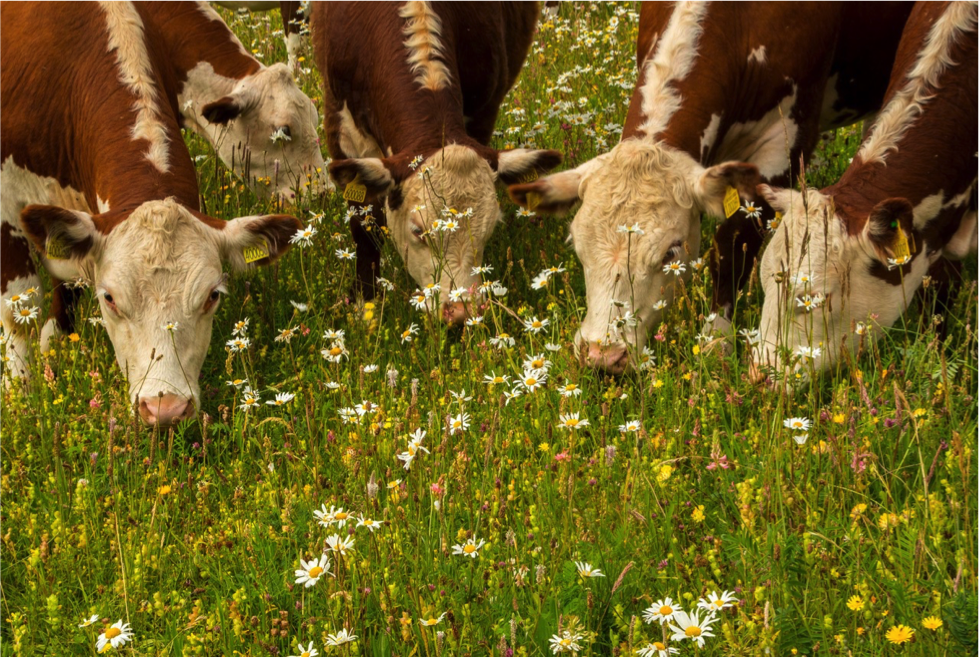



OSI tackles biggest carbon emitters for maximum reduction in emissions
OSI's Cool Farm Tool can help cattle farmers track and curb carbon emissions.Tackling all forms of greenhouse gas emissions is integral to resolving global climate warming. In the area of food production and supply, beef often has a bad reputation due to the release of emissions associated with rearing cattle, however there are significant opportunities to reduce the emissions released per kilogram of meat.
OSI Europe is reducing emissions at all stages of the beef supply chain, from farm through processing. At the production end of the supply chain, factors like feed, grazing and manure management all impact the volume and type of emissions released.
Several farms which supply OSI Europe have been using the Cool Farm Tool to track carbon and understand the effectiveness of their strategies to reduce emissions. This approach, which was piloted from 2019 to 2020, is leading the way in demonstrating how carbon emissions associated with beef production can be reduced.
This level of farmer engagement and collaboration across the supply chain is maximizing the impact of carbon reduction efforts, and will be integral to the achievement of OSI’s 2025 sustainability goals.
How to track emissions from beef production
The Cool Farm Tool can be used to measure greenhouse gas emissions, biodiversity management and the sustainability of water use. It shows how management practices on-farm enable the reduction of carbon emissions. For farmers, it is simple to use, as the calculations are based on information they should have to hand, and it can highlight areas where there is greatest potential for improvement.
Currently, OSI Europe has engaged ten farms using the Cool Farm Tool in Germany, five in Poland and three in the UK. After an analysis of the results, OSI will support an expand in all three countries in 2021.
How to reduce emissions in beef production
Brongain Farm is one of the UK-based farms using the Cool Farm Tool. The farm is aiming to achieve net zero carbon emissions by 2030, through the adoption of best practice and innovative approaches to rearing cattle.
The grass-based system incorporates legumes and herbal leys into the rotation that naturally help accumulate nitrogen in the soil, which overtime helps to improve soil structure.

They are also taking a technical approach to feeding, using precision nutrition technology to calculate diets to minimize emissions from enteric fermentation, a natural process which takes place in a cow’s rumen.
Measurement is key to understanding the impact of different approaches, which is why the farm has been using the Cool Farm Tool since 2019, to understand exactly how changes to feed, husbandry and grass management are reflected in the quantity of carbon sequestered or emissions released into the atmosphere.
Sustainable beef and return on investment
The Cool Farm Tool can highlight opportunities for relatively small changes to management practices which can have a significant impact. Typically, the first 10% of emission reductions on a farm can be achieved with low-cost investments, and often save costs in the long-term too. For example, fixing nitrogen through incorporating multi-species swards can replace the need for higher-cost, chemical fertilisers.
By prioritising beef, OSI Europe are tackling one of the biggest emitters at the production end of the supply chain, which will enable maximum impact in terms of carbon reduction. Ultimately, our aim is to support the sustainable production of beef. We envisage consumers being able to eat beef products while being confident that their dietary choice is safe for both them and the planet.
Accurate measuring of carbon at a farm level, using the Cool Farm Tool, is a great starting point for making this happen.



